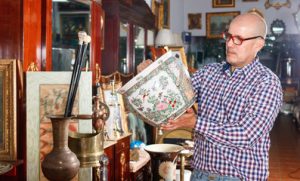Every transformation begins with clearing what no longer serves purpose. Paul’s Rubbish Removal and Demolition have become the unseen foundation of renewal. These processes no longer simply erase the old—they prepare the ground for sustainable growth. The modern approach to these industries reflects precision, responsibility, and innovation.

Gone are the days when demolition meant chaos and destruction. Today, it is a science of deconstruction, guided by efficiency and environmental care. Each step is calculated, each material traced, and each outcome considered. The same precision now defines rubbish removal, where waste is no longer discarded but repurposed.
Rubbish removal has evolved from a cleanup task into a resource management system. Every item collected is analyzed for reuse, recycling, or energy conversion. The process now supports the circular economy, reducing landfill dependency and maximizing material recovery. What once was waste now becomes the foundation of sustainability.
Demolition has followed a similar evolution, transforming from brute force to intelligent dismantling. Structures are no longer destroyed; they are carefully disassembled. This method allows the preservation of reusable materials like metal, concrete, and timber. It turns destruction into creation through strategic resource recovery.
The integration of technology has revolutionized both industries. Robotics, AI analytics, and automated sorting systems now streamline operations. Machines can separate waste with near-human precision and identify recyclable materials through smart sensors. These tools reduce human risk while increasing environmental efficiency.
Environmental consciousness drives much of this innovation. Rubbish removal companies now measure carbon footprints and adopt eco-friendly transport methods. Demolition sites monitor air quality, vibration levels, and noise pollution to minimize community impact. The entire system functions under a principle of balance between progress and preservation.
Safety protocols have become more advanced than ever before. Workers are equipped with smart helmets and sensor vests that detect hazardous conditions in real time. Drones provide aerial assessments before demolition begins, ensuring no structural surprises occur. This new level of precaution has redefined professionalism within the field.
The rise of urban renewal projects has intensified the demand for ethical demolition. Instead of removing buildings entirely, many teams focus on selective dismantling. This process targets only unsafe or outdated sections, keeping structurally sound areas intact. It reduces waste volume and accelerates redevelopment timelines.
Rubbish removal, on the other hand, has adopted a personalized model. Instead of one-size-fits-all services, removal systems are tailored based on waste type, volume, and sustainability goals. Residential, industrial, and commercial sectors each have specialized treatment plans. This flexibility enhances efficiency and accountability.
The shift toward sustainability is also changing material disposal. Organic waste is composted, metals are melted for reuse, and plastics are chemically broken down. Even demolition rubble can be repurposed as road base or new construction aggregate. Nothing truly disappears—it transforms.
The collaboration between rubbish removal and demolition has created a new ecosystem. When demolition occurs, waste is immediately processed and categorized on-site. Mobile recycling units sort debris before it ever reaches a landfill. This seamless coordination minimizes waste transport and energy use.
Digital management platforms have also modernized these industries. Teams now operate using real-time data systems that track waste flow and project milestones. Clients receive transparent reports detailing exactly where materials go. This transparency strengthens trust and aligns with green certification standards.
One of the newest trends involves demolition material upcycling. Instead of disposing of old construction materials, they are redesigned into art, furniture, or architecture. This creative transformation adds cultural and economic value to what was once debris. It merges sustainability with design innovation.
Social responsibility now plays a key role in both fields. Companies integrate community engagement before large-scale demolition or cleanup. Residents are informed, consulted, and even involved in recycling initiatives. This inclusion reduces conflict and builds collective ownership of urban renewal.
Environmental policies have also tightened across the globe. Permits for demolition now require waste diversion plans and sustainability compliance. Failure to meet eco-standards results in heavy penalties, encouraging responsibility. This regulation ensures that progress does not come at nature’s expense.
An overlooked aspect of demolition is emotional impact. Buildings carry memories, and their removal can trigger nostalgia or grief. To address this, some projects incorporate memorial documentation—photographs, 3D models, or salvaged artifacts. This preserves heritage while making space for new beginnings.
The psychology of renewal applies equally to rubbish removal. People often associate clutter with emotional stagnation. Clearing spaces physically and mentally revitalizes both home and work environments. In this sense, rubbish removal becomes a form of transformation therapy.
Circular innovation has found its strongest expression in waste-to-energy conversion. Advanced facilities now turn collected rubbish into fuel or electricity. This process not only reduces landfill use but also contributes to renewable energy systems. It demonstrates that even waste can generate progress.
Demolition projects are now integrating green logistics. Machinery runs on hybrid or electric power, and materials are transported through optimized routes. The focus is on minimizing emissions at every stage. This attention to efficiency embodies the principle of sustainable engineering.
Training programs for workers have adapted to meet modern demands. Technicians now learn environmental science, digital operations, and ethical disposal practices. This multidisciplinary skill set elevates the industry’s reputation and ensures future-readiness. The workforce has become a blend of manual expertise and technological literacy.
Economic implications of rubbish removal and demolition are also expanding. Recycled materials reduce production costs, and green certifications attract more investors. Urban redevelopment fueled by sustainable demolition increases property value. The cycle of clearing and rebuilding strengthens both communities and markets.
Emergency response demolition has also gained attention. After natural disasters, quick and safe removal of damaged structures prevents further harm. Specialized teams manage debris recovery, structural stabilization, and site restoration. These rapid interventions save lives and accelerate community recovery.
The relationship between rubbish removal and public health has grown more visible. Improper disposal leads to pollution, disease, and ecosystem damage. The shift toward regulated and scientific waste management protects both environment and population. Clean surroundings now symbolize collective responsibility.
Technological breakthroughs continue to redefine what’s possible. Smart sensors can now identify hazardous chemicals hidden in demolition debris. AI programs predict material recovery rates and optimize sorting efficiency. This combination of data and intelligence maximizes environmental return.
Future-forward demolition may become entirely autonomous. Remote-controlled machines and robotic arms will perform precise cuts without endangering workers. Real-time monitoring will ensure that no surrounding structures are compromised. The future of demolition will be defined by safety, sustainability, and smart control.
Rubbish removal, too, is entering a new digital frontier. Smart bins equipped with sensors notify when they’re full, reducing unnecessary pickups. Waste data is analyzed to forecast trends and improve collection strategies. This predictive system enhances both efficiency and environmental outcomes.
Cultural shifts toward minimalism have also influenced waste management. As people prioritize conscious consumption, less rubbish accumulates in the first place. Demolition follows the same principle—building smaller, smarter, and greener. Simplicity becomes the new form of sophistication.
Global awareness has fueled the rise of zero-waste demolitions. In these projects, every material is reused, recycled, or upcycled. Even dust from crushed concrete is captured for eco-friendly applications. These projects prove that renewal doesn’t require destruction—it requires vision.
The partnership between demolition engineers and environmental scientists continues to deepen. Joint research explores new ways to neutralize toxins, reuse composite materials, and protect soil quality. These innovations redefine how urban landscapes evolve. The collaboration turns demolition into a cornerstone of environmental progress.
The aesthetic value of deconstruction is gaining recognition too. Architects and artists now document the demolition process as part of cultural storytelling. It captures the poetic tension between decay and creation. What once symbolized loss now represents transformation.
In smaller communities, rubbish removal programs have inspired local entrepreneurship. People create businesses focused on repurposing items instead of discarding them. Furniture, décor, and art emerge from discarded materials, blending creativity with sustainability. It’s proof that innovation often begins in what’s thrown away.
Education is shaping the future of these industries as well. Schools introduce sustainability and recycling concepts early in environmental studies. This new generation grows up viewing waste as opportunity, not burden. They will lead the next evolution of rubbish removal and demolition.
Psychologically, the act of clearing old structures resonates deeply with renewal. It mirrors human desire to let go of the past and create fresh beginnings. The emotional and environmental narratives intertwine beautifully in this work. Each removal becomes a story of rebirth.
Rubbish removal and demolition, though often unseen, are silent forces behind modern civilization. They make way for clean air, safer structures, and thriving communities. Their evolution reflects humanity’s growing wisdom in balancing progress with preservation. Every cleared space becomes an opportunity to build smarter, cleaner, and more consciously than before.
In the end, these industries symbolize more than just removal—they represent renewal. Each cleared site carries the promise of reinvention and rebirth. Through technology, ethics, and awareness, the world is learning to build without waste. The modern approach ensures that even in demolition, creation quietly begins anew.


